Dan Webb - Accelerated DOM Scripting with Ajax, APIs, and Libraries
Here you can read online Dan Webb - Accelerated DOM Scripting with Ajax, APIs, and Libraries full text of the book (entire story) in english for free. Download pdf and epub, get meaning, cover and reviews about this ebook. year: 2007, publisher: Apress, genre: Home and family. Description of the work, (preface) as well as reviews are available. Best literature library LitArk.com created for fans of good reading and offers a wide selection of genres:
Romance novel
Science fiction
Adventure
Detective
Science
History
Home and family
Prose
Art
Politics
Computer
Non-fiction
Religion
Business
Children
Humor
Choose a favorite category and find really read worthwhile books. Enjoy immersion in the world of imagination, feel the emotions of the characters or learn something new for yourself, make an fascinating discovery.
- Book:Accelerated DOM Scripting with Ajax, APIs, and Libraries
- Author:
- Publisher:Apress
- Genre:
- Year:2007
- Rating:4 / 5
- Favourites:Add to favourites
- Your mark:
Accelerated DOM Scripting with Ajax, APIs, and Libraries: summary, description and annotation
We offer to read an annotation, description, summary or preface (depends on what the author of the book "Accelerated DOM Scripting with Ajax, APIs, and Libraries" wrote himself). If you haven't found the necessary information about the book — write in the comments, we will try to find it.
If youre a web developer with previous JavaScript and DOM scripting experience, Accelerated DOM Scripting with Ajax, APIs, and Libraries is perfect for you to take your knowledge to the next level.
This book is about JavaScript and using the document object modelthe conduit to the HTML document. This book is not about learning how to program JavaScript from scratch. It starts with the assumption that you have done some JavaScript development before and understand the JavaScript syntax. This book builds on that knowledge to give you a deeper understanding of DOM scripting and how to apply that to your projects. It uses this new understanding to describe what JavaScript libraries are and show you how they can be applied to your project. The book will also explain Ajax and how best to plan and apply it to your projects. It explains how to build simple animation objects for adding movement to elements on the page. There are straightforward examples that demonstrate the techniques used throughout the book.
JavaScript has seen a resurgence in popularity over the past few years, and with it has come an exploration of the power of the language as well as what it can do within the browser. This book will explain techniques new and oldsuch as closures, encapsulation, and inheritancethat many are using and how you can best apply them to your own projects.
By reading this book, you should have a greater understanding of how JavaScript works and be able to use advanced concepts such as closures and event delegation to build more flexible applications for the Web. Youll walk away with a greater appreciation for JavaScript libraries and how they can simplify and speed up your development. Youll also be able to implement Ajax effectively into your site, create special effects, use JavaScript libraries, and know how best to apply these libraries to your projects.
What youll learn
Where CSS, HTML, and the DOM fit into modern scripting, and how to use them together effectively
Object-oriented programming techniques for more efficient JavaScript coding
How to use JavaScript libraries such as Prototype in your work
How to build effective form validation into your applications using Ajax
How to create mashups using APIs
How to build dynamic user interfaces
Who this book is for
This book is for beginner to intermediate developers, and already have knowledge of HTML, CSS, and JavaScript.
Dan Webb: author's other books
Who wrote Accelerated DOM Scripting with Ajax, APIs, and Libraries? Find out the surname, the name of the author of the book and a list of all author's works by series.

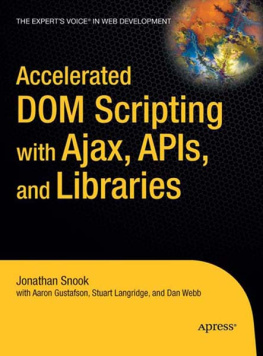


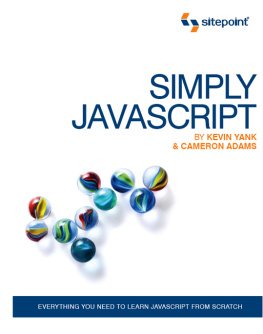
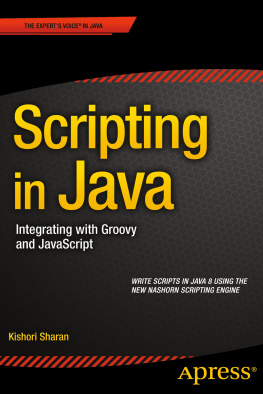

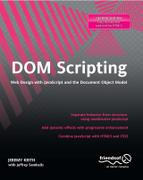
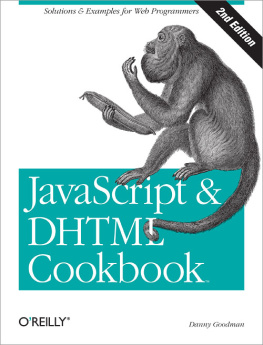

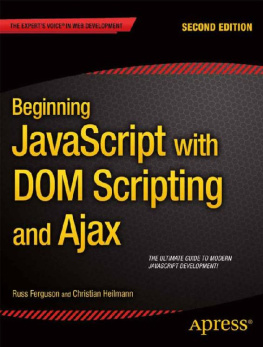
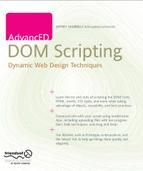
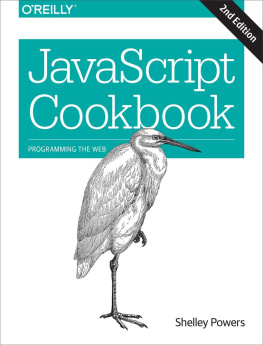
 JONATHAN SNOOK is currently a freelance web developer based in Ottawa, Canada. A Renaissance man of the Web, he has programmed in a variety of languages, both server-side and client-side. He also does web site and web application design. Jonathan worked for more than seven years with web agencies, with clients such as Red Bull, Apple, and FedEx. He made the leap to freelancing back in January 2006. Jonathan likes to share what he knows through speaking, writing books, writing for online magazines such as Digital Web and Sitepoint, and writing for his own popular blog at http://snook.ca.
JONATHAN SNOOK is currently a freelance web developer based in Ottawa, Canada. A Renaissance man of the Web, he has programmed in a variety of languages, both server-side and client-side. He also does web site and web application design. Jonathan worked for more than seven years with web agencies, with clients such as Red Bull, Apple, and FedEx. He made the leap to freelancing back in January 2006. Jonathan likes to share what he knows through speaking, writing books, writing for online magazines such as Digital Web and Sitepoint, and writing for his own popular blog at http://snook.ca. AARON GUSTAFSON founded his own web consultancy (after getting hooked on the Web in 1996 and spending several years pushing pixels and bits for the likes of IBM and Konica Minolta): Easy! Designs LLC. He is a member of the Web Standards Project (WaSP) and the Guild of Accessible Web Designers (GAWDS). He also serves as Technical Editor for A List Apart, is a contributing writer for Digital Web Magazine and MSDN, and has built a small library of writing and editing credits in the print world. Aaron has graced the stage at numerous conferences (including An Event Apart, COMDEX, SXSW, The Ajax Experience, and Web Directions) and is frequently called on to provide web standards training in both the public and private sectors. Aaron blogs at http://easy-reader.net.
AARON GUSTAFSON founded his own web consultancy (after getting hooked on the Web in 1996 and spending several years pushing pixels and bits for the likes of IBM and Konica Minolta): Easy! Designs LLC. He is a member of the Web Standards Project (WaSP) and the Guild of Accessible Web Designers (GAWDS). He also serves as Technical Editor for A List Apart, is a contributing writer for Digital Web Magazine and MSDN, and has built a small library of writing and editing credits in the print world. Aaron has graced the stage at numerous conferences (including An Event Apart, COMDEX, SXSW, The Ajax Experience, and Web Directions) and is frequently called on to provide web standards training in both the public and private sectors. Aaron blogs at http://easy-reader.net. STUART LANGRIDGE is a freelance hacker, published author, and noted conference speaker on DOM scripting and web technologies across Europe and the US. He's also part of LugRadio, the world's best free and open source software radio show. Aaron writes about open-source software, JavaScript, the Web, philosophy, and whatever else takes his fancy at http://kryogenix.org.
STUART LANGRIDGE is a freelance hacker, published author, and noted conference speaker on DOM scripting and web technologies across Europe and the US. He's also part of LugRadio, the world's best free and open source software radio show. Aaron writes about open-source software, JavaScript, the Web, philosophy, and whatever else takes his fancy at http://kryogenix.org. DAN WEBB is a freelance web application developer whose recent work includes developing Event Wax, a web-based event management system, and Fridaycities, a thriving community site for Londoners. He maintains several open-source projects, including Low Pro and its predecessor the Unobtrusive JavaScript Plugin for Rails, and is also a member of the Prototype core team. Dan is a JavaScript expert who has spoken at previous @media conferences, RailsConf, and The Ajax Experience and has written for A List Apart, HTML Dog, Sitepoint, and .NET magazine. He blogs regularly about Ruby, Rails, and JavaScript at his site, www.danwebb.net, and wastes all his cash on hip hop records and rare sneakers.
DAN WEBB is a freelance web application developer whose recent work includes developing Event Wax, a web-based event management system, and Fridaycities, a thriving community site for Londoners. He maintains several open-source projects, including Low Pro and its predecessor the Unobtrusive JavaScript Plugin for Rails, and is also a member of the Prototype core team. Dan is a JavaScript expert who has spoken at previous @media conferences, RailsConf, and The Ajax Experience and has written for A List Apart, HTML Dog, Sitepoint, and .NET magazine. He blogs regularly about Ruby, Rails, and JavaScript at his site, www.danwebb.net, and wastes all his cash on hip hop records and rare sneakers.